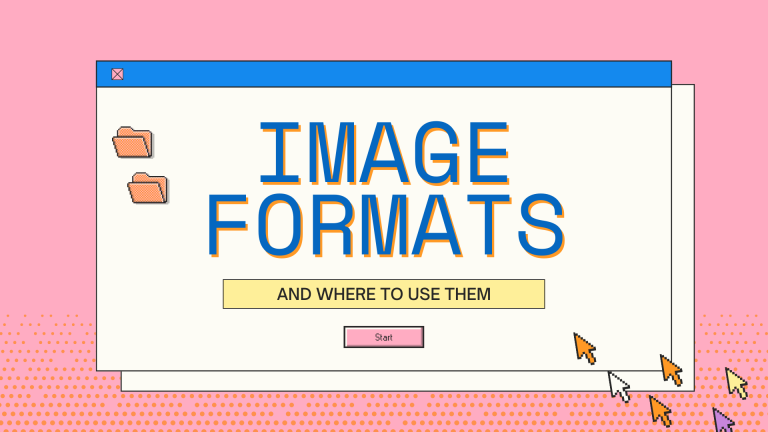Decoding Image Formats: A Comprehensive Guide to Types, Characteristics, and Best Uses

Introduction:
In the expansive world of digital media, the choice of image format plays a pivotal role in determining the quality, file size, and compatibility of visual assets. Understanding the diverse range of image formats available empowers creators to make informed decisions, optimizing their content for specific use cases. In this exhaustive guide, we will delve into various image formats, exploring their characteristics, strengths, and the ideal scenarios where each format shines. Whether you’re a photographer, graphic designer, or content creator, this comprehensive resource equips you to navigate the intricate landscape of image formats and make choices aligned with your creative objectives.
1. JPEG (Joint Photographic Experts Group):
Characteristics:
- Lossy compression: JPEG uses lossy compression, meaning some image data is discarded to reduce file size.
- Widespread support: Widely supported across devices, platforms, and browsers.
- Suitable for photographs: Ideal for photographs and images with gradient colors.
Best Uses:
- Web images: JPEG is commonly used for web images due to its smaller file sizes.
- Photography: Most digital cameras save images in JPEG format by default.
- Print: Suitable for print materials when high compression is acceptable.
2. PNG (Portable Network Graphics):
Characteristics:
- Lossless compression: PNG offers lossless compression, preserving image quality without sacrificing details.
- Transparency support: Allows for transparent backgrounds, making it suitable for logos and graphics.
- Larger file sizes: PNG files can be larger than JPEGs due to lossless compression.
Best Uses:
- Logos and graphics: PNG is ideal for images requiring transparent backgrounds.
- Digital art: Suitable for digital illustrations and graphics where detail preservation is crucial.
- Web design: Often used for elements that require transparency or crisp edges.
3. GIF (Graphics Interchange Format):
Characteristics:
- Limited color palette: GIFs support a limited color palette, often 256 colors.
- Animation support: GIFs can be animated, making them suitable for simple web animations.
- Lossless compression: GIF uses lossless compression but is less efficient for photographs.
Best Uses:
- Simple animations: GIFs are commonly used for small, simple animations on the web.
- Icons and buttons: Suitable for small graphics with a limited color palette.
- Web design: Ideal for elements that require animation and simple graphics.
4. TIFF (Tagged Image File Format):
Characteristics:
- Lossless compression: TIFF supports both lossless and lossy compression.
- High-quality images: Suitable for preserving high-quality images and details.
- Large file sizes: TIFF files can be larger due to lossless compression.
Best Uses:
- Print and publishing: Often used in professional printing due to its high quality.
- Photography: Suitable for storing high-resolution photographs without loss of detail.
- Archiving: Used for archival purposes when maintaining image fidelity is crucial.
5. BMP (Bitmap Image):
Characteristics:
- Uncompressed format: BMP is typically an uncompressed image format.
- Large file sizes: BMP files can be large due to lack of compression.
- Simple structure: A straightforward format with pixel data.
Best Uses:
- Windows applications: Commonly used in Windows applications and operating systems.
- Simple graphics: Suitable for basic graphics with no need for compression.
- Archiving: Used for preserving images without loss of quality.
6. SVG (Scalable Vector Graphics):
Characteristics:
- Vector format: SVG is based on XML and is a vector image format.
- Scalable: SVG images can be scaled without loss of quality.
- Code-based: Created using XML code, making them editable and accessible.
Best Uses:
- Logos and icons: Ideal for logos and icons that need to be scaled.
- Web design: SVG is commonly used in responsive web design for scalable graphics.
- Interactive graphics: Suitable for graphics requiring animation or user interaction.
Conclusion:
Navigating the diverse landscape of image formats involves considering factors such as compression, transparency, file size, and intended use. Each format serves specific purposes, and understanding their characteristics empowers creators to make strategic decisions aligned with their creative goals.
As you embark on your creative journey, consider the unique strengths of each image format and leverage them according to your specific needs. Whether you’re optimizing images for the web, preparing print materials, or creating digital art, the right choice of image format can significantly impact the quality and effectiveness of your visual content. Embrace the versatility of image formats, experiment with different options, and let your creative vision shine through in the rich and diverse world of digital imagery.




